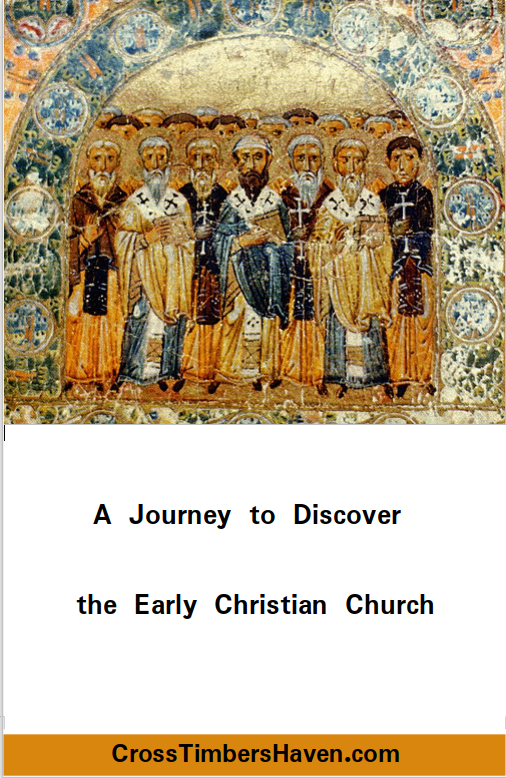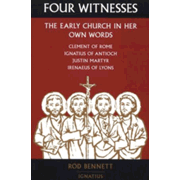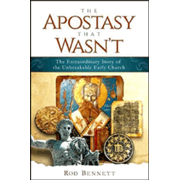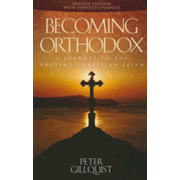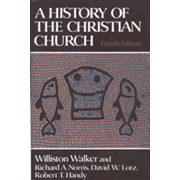This is Part IV of a series of articles. Part III can be read here. You can download this article as an eBook to read on your computer or reading device at your leisure.
Afterwords
The previous three Sessions contain the bulk and the core aspects of my discovery of the Early Church. Indeed this is a short writing regarding the early history of the Church. Yet from this point forward it is a lot easier in determining which Christian tradition is closest to the tradition of the Apostles and of the early church fathers: any tradition that lacks or denies these apects of the early church is removed from the prospective list and considered a schism.
My search for the Early Church has been a long road. It began as early as 1991 while I was still a high school student, and it still continues to this day. The link from the New Testament Scriptures to the early church, which led down through time to the present day, seemed to alude me.
I read many books, read many articles, listened to many lectures, and listened to many sermons during this quest. On this journey I had embraced Deism, Theism, Judaism, and Christian Mysticism. It was only when I discovered the writings of the early Church Fathers that I was convinced that Christianity was more than mere mysticism but also an historic event.
The link from New Testament to early Church Fathers was when I discovered that Polycarp and Igntius were both discipled by the Apostle John. This link was solidified when I also discovered that the Apostle Peter personally installed and appointed Ignatius as Bishop of Antioch. Peter would not apoint an overseer who, as James wrote, would be tossed about by the winds. Peter would appoint an Overseer who would hold stedfast to the teachings of John and of Peter.
After the discovery of this link, I wanted to read authentic writings of Polycarp and of Ignatius. And although their writings could not be considered as sacred Scripture, it did, however, elevate their writings above all other theological writings from that time through today. For me, no other theologian could be as close to the early church than one who personally knew and was discipled by two of Jesus’ inner circle of three disciples (Peter, James, and John).
I read and researched about Polycarp and Ignatius along with other early Church Fathers for a long time. Eventually, I began reading their writings. I discovered that a lot of the writings of the early Church Fathers were short and could be read fairly quickly.
As I read the original writings of the early Church Fathers, I came to realize that what I thought was true may not have been true after all. Working through the swallowing of one’s pride was perhaps the hardest part of the journey. For if Ignatius’ teachings on church polity and church practice were different than my own, then by what means could I be correct and Ignatius, who was discipled by John and Peter, be wrong? This is the point and section of the journey at which the church I would attend changed.
For certain the journey goes on and will continue. Yet at this point in time I have found no alternative, no counter-argument, and no historical references by which to go back from where I had come.
Works Cited
This is a list of sources cited in this document. However, see the Additional Resources section, located after this listing, as a lot of ideas in this writing were influenced from the materials listed therein.
Against Heresies, St. Irenaeus, http://newadvent.org/fathers/0103.htm.
The Didache, http://www.newadvent.org/fathers/0714.htm.
Epistle to the Philadelphians, St. Ignatius, http://www.newadvent.org/fathers/0108.htm.
Epistle of Polycarp to the Philippians, St. Polycarp, http://www.newadvent.org/fathers/0136.htm.
The Fathers of the Church, Main Online Index http://newadvent.org/fathers/.
The First Apology, Justin Martyr, http://www.newadvent.org/fathers/0126.htm.
The Letter of the Church of Rome to the Church of Corinth, Clement, http://www.newadvent.org/fathers/1010.htm.
NKJV Bible Online, BibleGateway.com
The Second Apology, Justin Martyr, http://www.newadvent.org/fathers/0127.htm.
Additional Resources
The Apostasy That Wasn’t: The Extraordinary Story of the Unbreakable Early Church, Rod Bennett, Catholic Answers Press, 2015.
Becoming Orthodox: A Journey to the Ancient Christian Faith, Peter Gillquist, Ancient Faith Publishing, 1992.
Epistle to the Ephesians, St. Ignatius, http://www.newadvent.org/fathers/0104.htm.
Epistle to the Magnesians, St. Ignatius, http://www.newadvent.org/fathers/0105.htm.
Epistle to the Romans, St. Ignatius, http://www.newadvent.org/fathers/0107.htm.
Epistle to the Smyrnaeans, St. Ignatius, http://www.newadvent.org/fathers/0109.htm.
Logic and Protestantism’s Shaky Foundations, Fr. Brian Harrison O.S., Catholic Answers Magazine Online, Dec. 1992.
The Real Story of Catholic History: Answering Twenty Centuries of Anti-Catholic Myths, Steve Weidenkopf, Catholic Answers Press, 2017.
Rock and Sand: An Orthodox Appraisal of the Protestant Reformers and Their Teachings, Archpriest Josiah Trenham, Fr. Michael Monos. Newrome Press LLC, 2018.
The Story of Christianity, Volume 1: The Early Church to the Dawn of the Reformation, Justo Gonzalez, Harper and Row, 1984.
West of Jesus: The Bible’s Answer to the Protestant Departure from Orthodox Belief, Anthony of the Desert, Xlibris, 2012.
